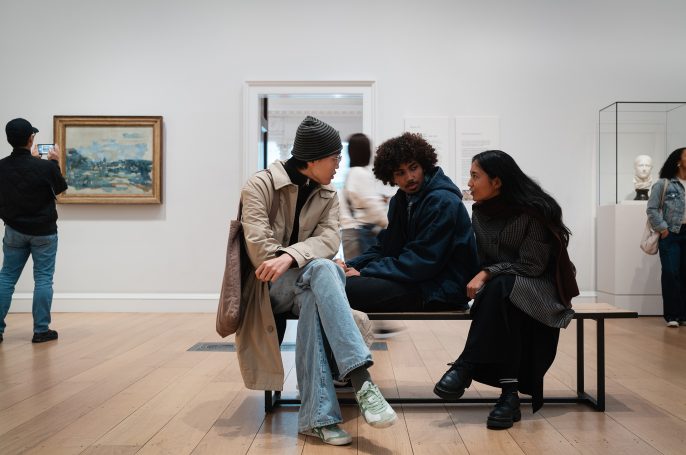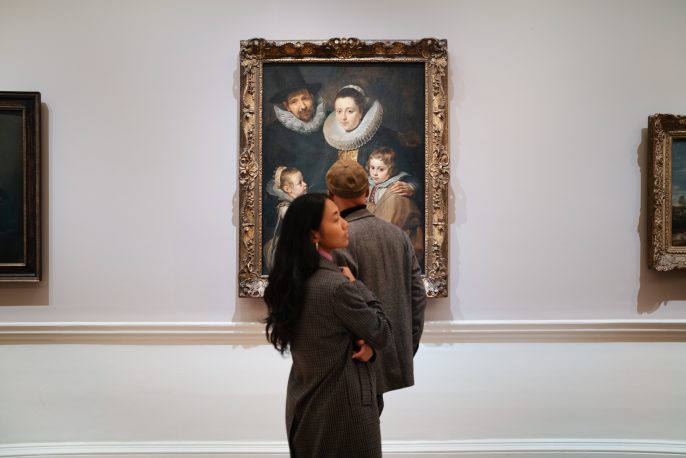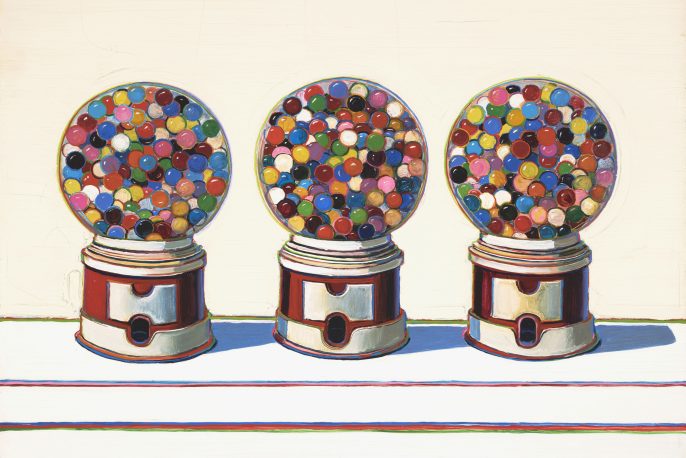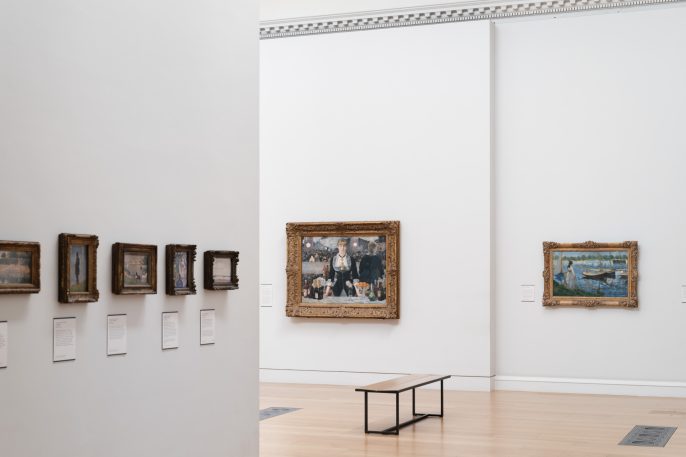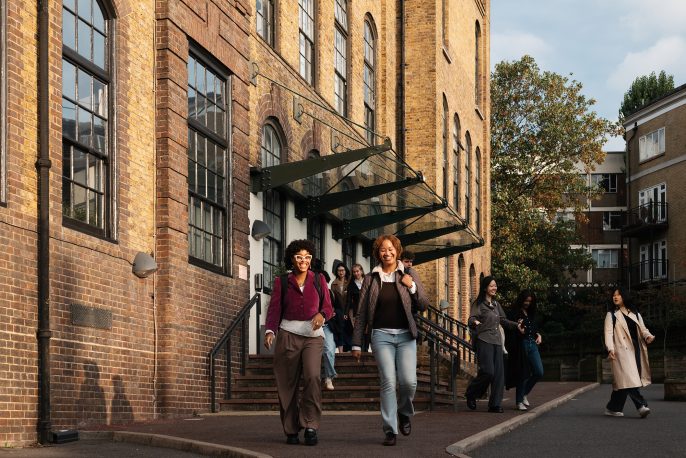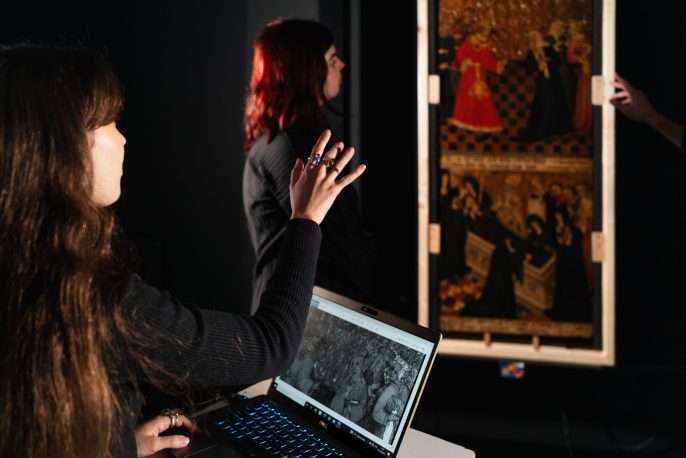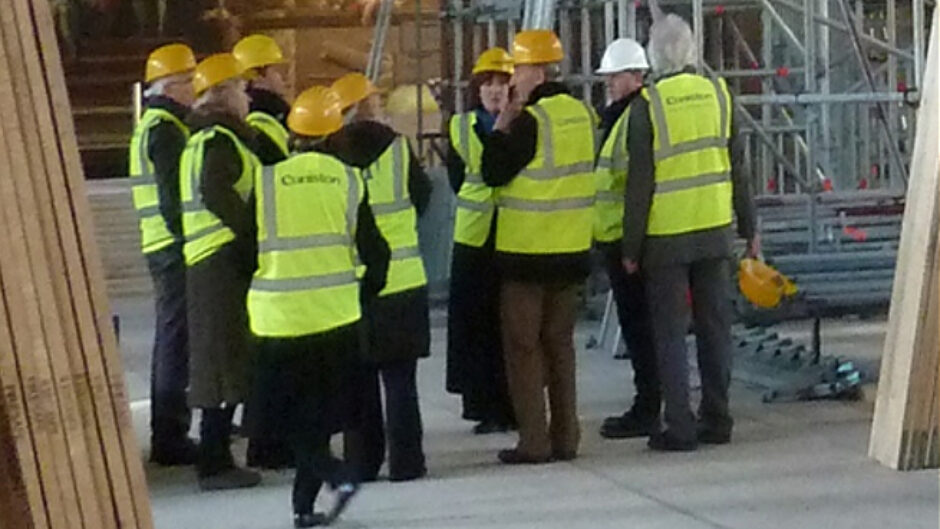Wall paintings are part of buildings and, with few exceptions, wall painting deterioration is associated with building deterioration issues, both mechanical and environmental (Figure 1). For this reason, effective wall painting conservation always involves collaborating with those working on the building, both at the design and implementation stage. Wall painting conservation projects regularly have sub optimal outcomes, not because of any lack of expertise on the conservation and architectural sides of the project, but due to a lack of understanding of other specialist fields and of how different practitioners work.
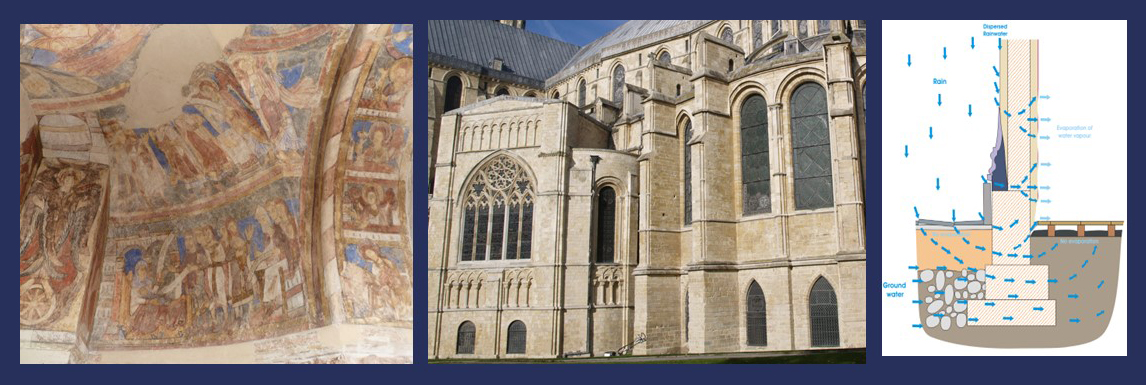
It is common for non wall painting conservators involved in conservation projects to assume that conservation consists of treatment (Figure 2). However, wall painting conservators understand that, for a successful project, the following steps will be involved:
- Identification of the causes of deterioration
- Controlling the causes of deterioration
- Treatment – stabilisation/aesthetic
- Long-term preventive conservation
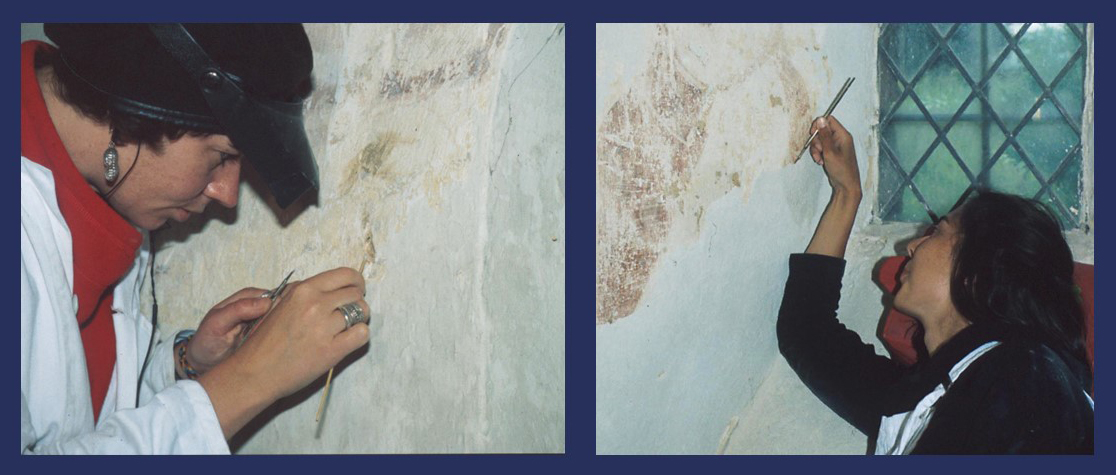
The conservator will understand that wall painting treatment should only be undertaken once all building defects and environmental issues are identified and addressed. However, is important not to assume that others will have the same contextual view of the conservators’ involvement. It may come as a surprise to many on a design team that wall painting conservators are well-versed in, among other things, the effect of the building condition, heating systems, rainwater disposal systems and the effect, both direct and indirect, of visitors (Figure 3).
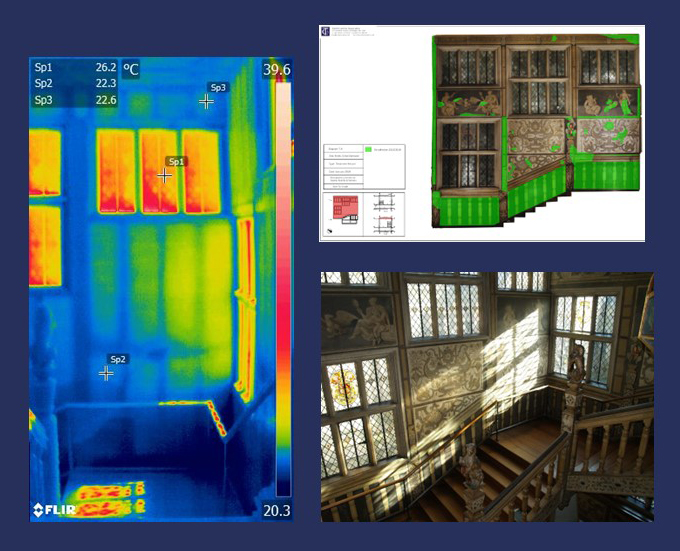
The involvement of wall painting conservation on a project occurs for a number of reasons, depending on the client and the building type. These can include:
- Professional custodian – preventive conservation
- Professional/lay custodian observes or perceives chronic deterioration (fading etc.)
- Critical deterioration – fire/flood/physical impact
- Enabling works for development/redecoration (investigation for unknown wall paintings or stabilisation/protection of vulnerable paintings)
For larger projects, as well as the client, it is likely that the wall painting conservator will be working alongside a design team who can include:
- Principal Designer
- Project Manager
- Architect/Surveyor
- Structural Engineer
- M&E Engineer
- Fundraiser
- Public Engagement Officer
- Other conservators (stone/plaster/glass/paintings)
It is important for the wall painting conservator to remember that many building professionals on a design team will never have worked on a project where wall paintings are present, therefore, basic assumptions about the conservation and protection of the wall paintings should not be taken for granted.
Historically, wall painting conservators were often regarded as skilled contractors with the architect being the only or main building professional on the project (Figure 4). In these situations, the architect would often specify and sign off conservation works, usually charging a percentage and carrying a level of liability for the work that they had specified. Today, with wall painting conservators being accredited professionals, the relationship tends to be on a more equal footing, with the conservator preparing technical specifications, often included within an architectural contract, but without the architect designing or being liable for the conservation treatment. It is important that there is complete clarity between the conservator, architect and client about the relationship and responsibilities within the project.
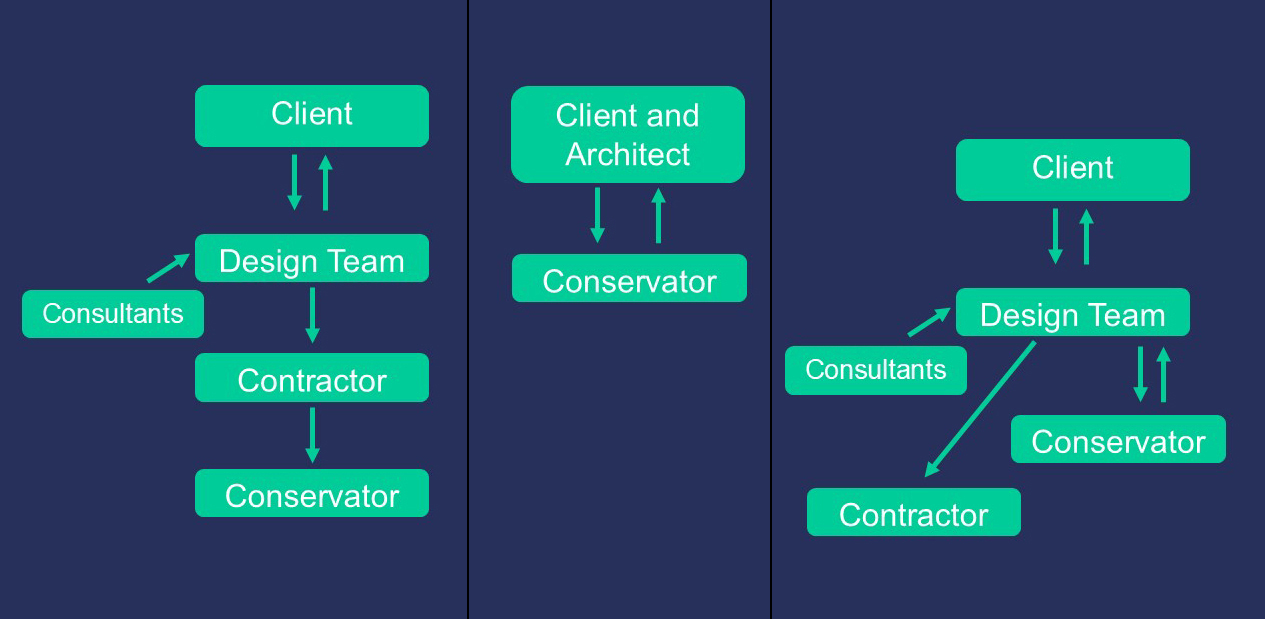
The most effective and successful projects occur when the conservator becomes involved early in the project, possibly at RIBA ‘Plan of Work’ stage 0 – 1, when the general approach to the project is being established (Figure 5).1 If the conservator only becomes involved at a later stage, perhaps RIBA 3-4, it is entirely likely that design decisions have been made which could have a negative effect on the wall paintings and they will need to be reconsidered. This can cause a costly and disruptive delay.
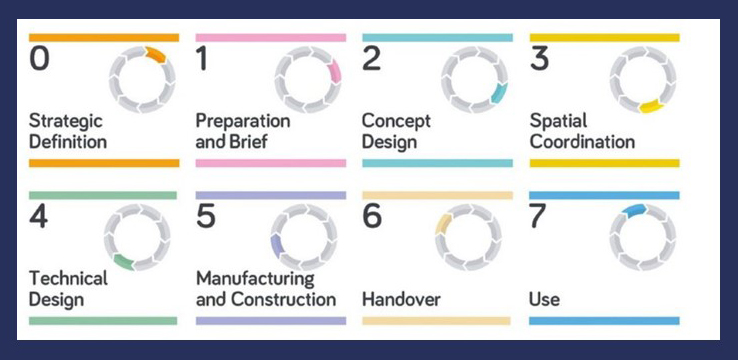
In many building projects the time involved in the investigations of the underlying causes of deterioration for wall paintings and the subsequent control measures, which often include long-term drying, are underestimated. It is important that the likely timetable is brought to the attention of the design team as early as possible in order to ensure that the project schedule is accurate from an early stage, both so that conservation works can be coordinated with other elements, and to ensure that funding is available at the correct time.
For many projects funding ceases at the completion of the capital works, or a little time afterwards, at RIBA 6-7. Effective long-term conservation is a process, rather than an event, and it is important that the conservator ensures that the client and design team understand that long-term preventive conservation is essential to maintain the stability of the paintings and to protect the investment made during the main conservation treatment, and therefore needs to be funded.
The greatest risk to wall paintings takes place during building work, with particular risks associated with water ingress, environmental instability, impact damage and vibration. The wall painting conservator should design and oversee wall painting protection measures throughout the project (Figure 6).
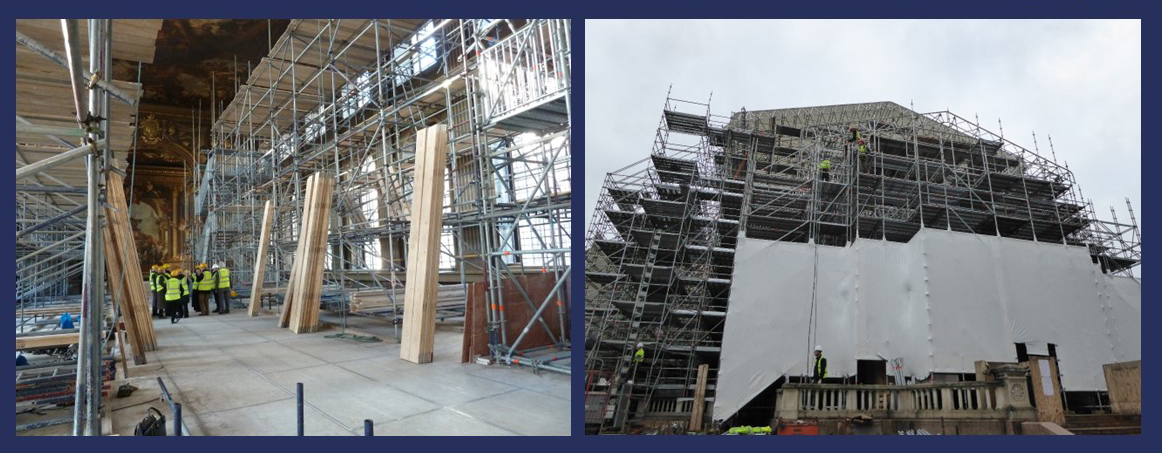
The most successful projects are those that are undertaken with a collaborative approach to working, where – across the design team – there is a clear understanding of the interface between wall painting conservation and other elements of the building work, and where there is a free and open exchange of information (Figure 7). The wall painting conservator should be proactive on the design team, bringing forward all the issues that may have an impact on the wall paintings, and aware that what might be an obvious risk to an experienced wall painting conservator may not be apparent to those for whom this is their first interaction with painted architectural surfaces. In this role it is important that the conservator is positive and solution focussed, rather than negative and providing reasons why a specific aspect of the building work should not be undertaken (Figure 8).
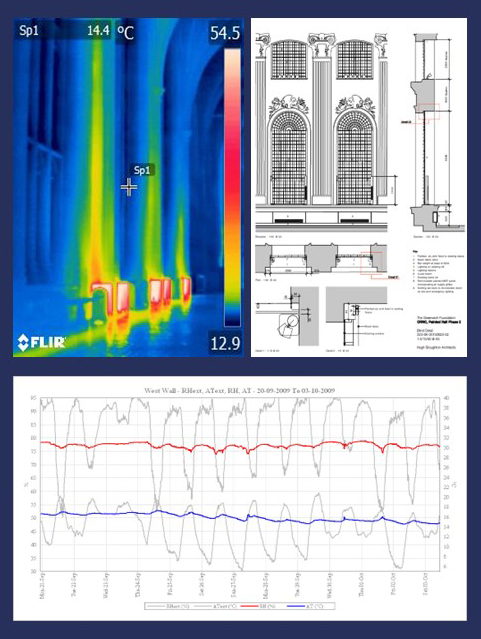
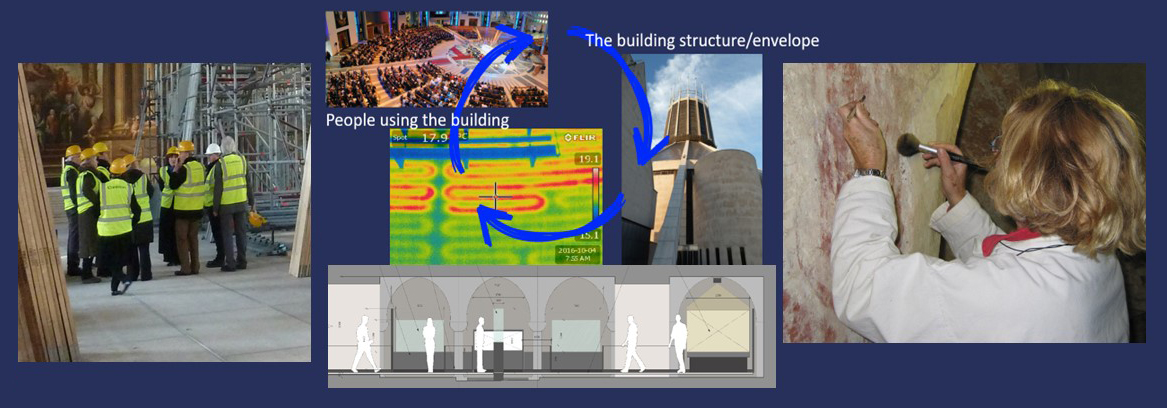
Currently, at the early career stage, there is little understanding between architects, engineers and conservators due to the fact that they rarely meet and are trained without any awareness of the others’ disciplines. A simple and effective way of improving the situation would be to ensure that, at graduate level, there is an opportunity for conservators, architects, engineers and other building professionals to meet and to exchange ideas, either in a shared teaching or workshop setting.
1 The stages refer to the RIBA ‘Plan of Work’ template – see https://www.architecture.com/knowledge-and-resources/resources-landing-page/riba-plan-of-work accessed 05/03/25.
